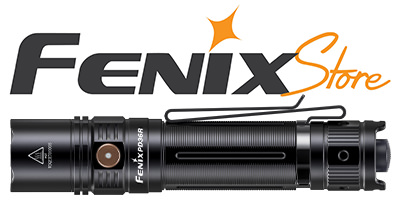LightForce
Newly Enlightened
Big comparison of four ArmyTek Predator XP-G tints
Winter - 1C, Spring - 2T, Summer - 5C, Fall - 90CRI.



From left to right: R5 1C, S2 2T, R4 5C, Q2 90CRI

As you can see on the Cree chart they covers wide range of available CCT's of currently produced white LED's.
S2 2T bin is rare bin in ArmyTek offer, I hope they will provide it for us permanently. It is rare occassion to compare such a broad tints range from the same flashlight in one place at one moment. I'm going to make new sessions continuously across many places and atmospherics conditions in this year as time allows. My camera, Canon EOS 40D can capture high quality images and the only limitation is availability of interesting sites for beamshot sessions. But we will see... I decided to join all shots in one big JPEG file which is nice to download, open and compare in web browser. I will add animated gif's and videos in the near future.
I decided to join all shots in one big JPEG file which is nice to download, open and compare in web browser. I will add animated gif's and videos in the near future.
Session 1: "Foggy winter near the city"

How does 331lm 90CRI stand for the 500lm S2?
2sec, f/4, ISO400 exposure, last set of pictures (graffiti dummy tank) on ISO200.
35mm (35mm film equivalent) focal length
5000K daylight white balance
All beamshots on high mode (LED current 1500mA)
Stacked photos
wide angle, close-up


animated GIF's
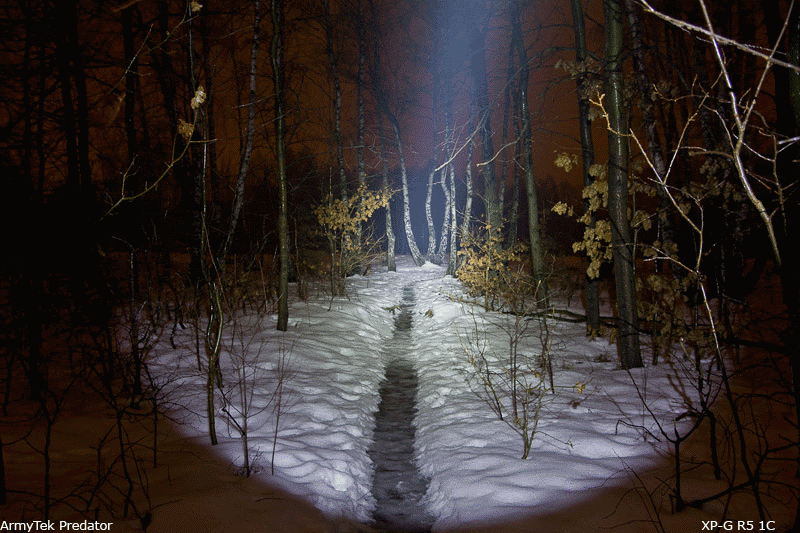
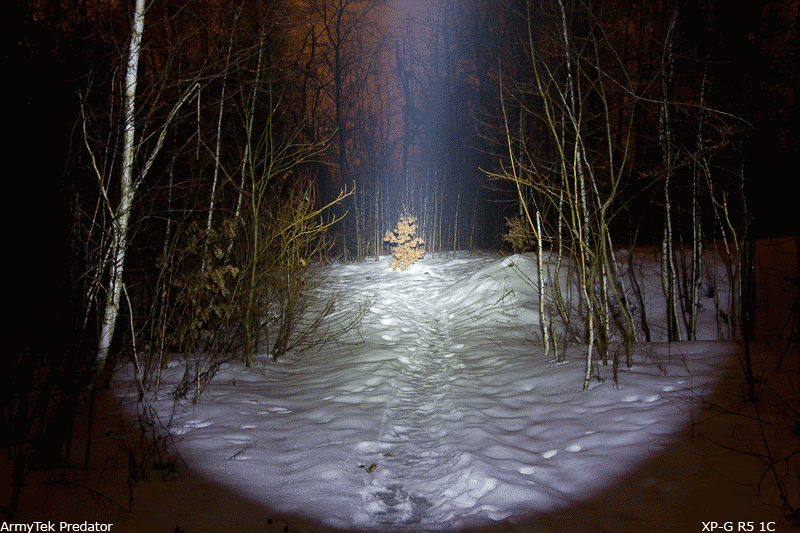
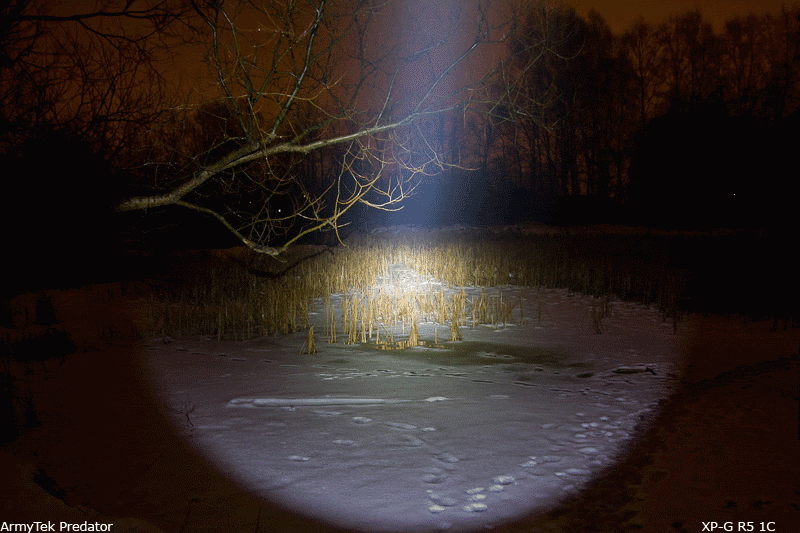
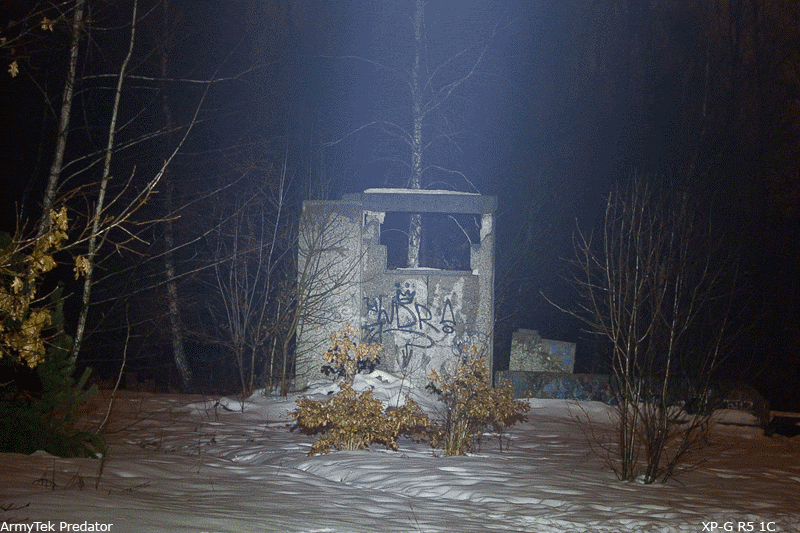
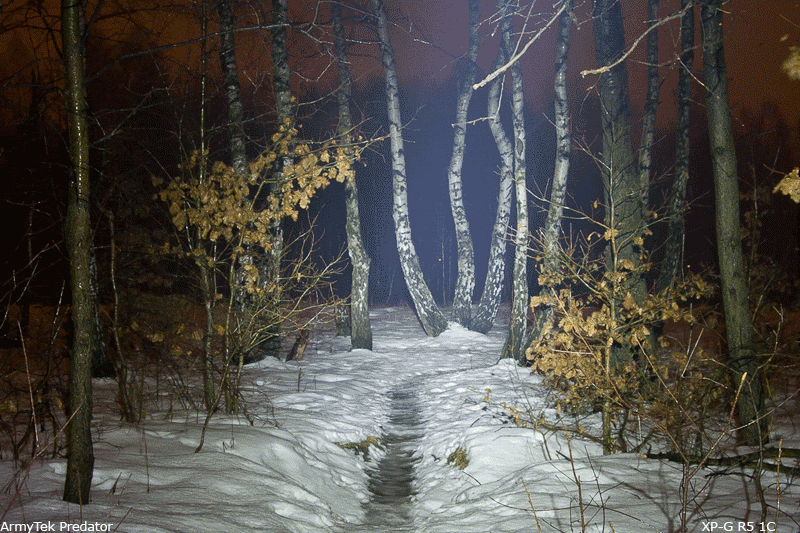
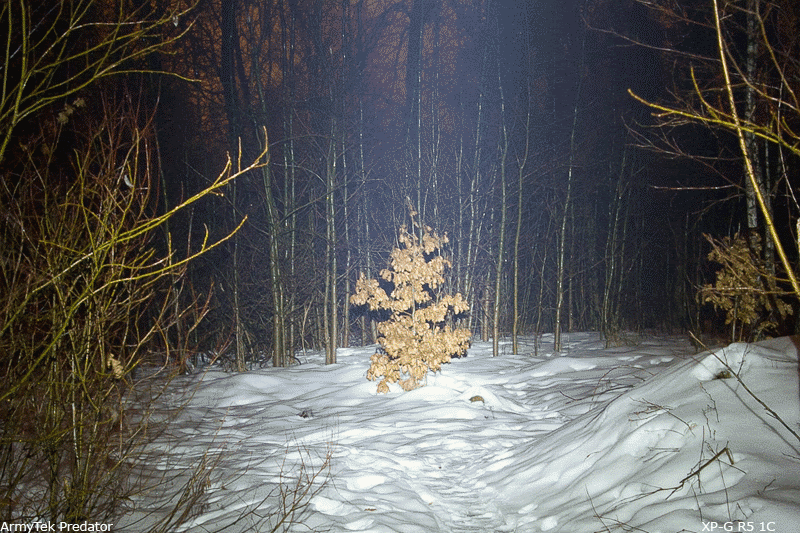
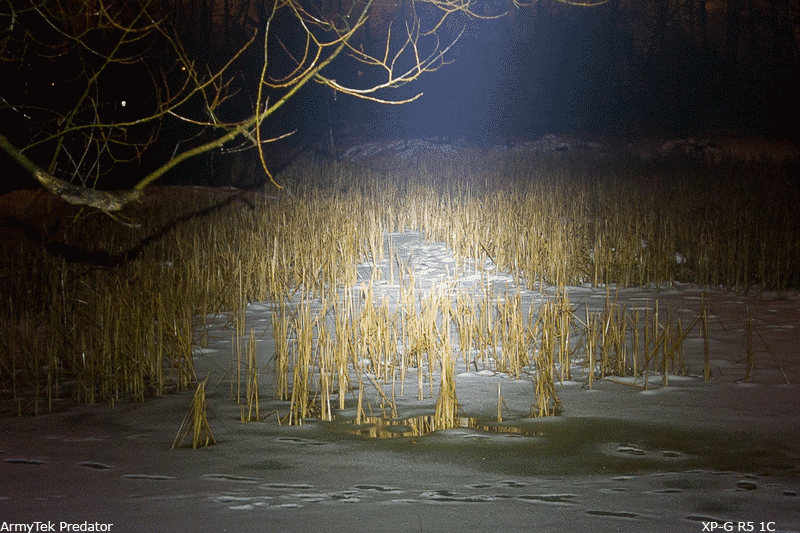
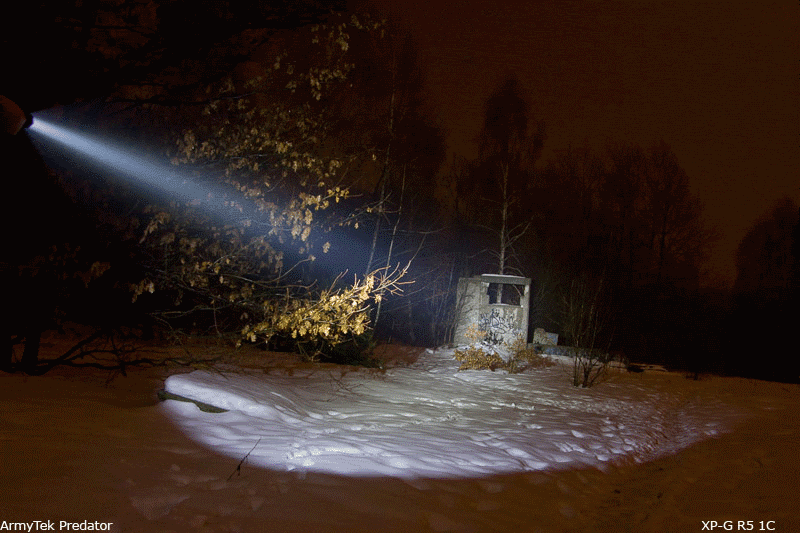
Set of 45 individual beamshots
wide angle
reference shot, R5 1C, S2 2T, R4 5C, 90CRI

























close-up: R5 1C, S2 2T, R4 5C, 90CRI




















It was misty evening during slight thaw. Ambient light from near city was present due to low clouds cover. Natural, wet targets always favorise warm tints. Warm light also scatters less in foggy air so weaker output of Q2 90CRI LED suprisingly goes near as far as massive output of 2T S2 which also is good for natural green targets illumination. During that session I found 1C and 5C tints most pleasant to my eyes. 2T was greenish in the comparison to the rest of the lights but also the brightest, which is obvious.
Session 2: "The throw behind the cold front"

When the lumens play the main role.
different exposure settings for each scene depending on target's distance, the same exposure settings for each tint in one scene.
28mm (35mm film equivalent) focal length
5000K daylight white balance
Stacked photos
wide angle, close-up


animated GIF's
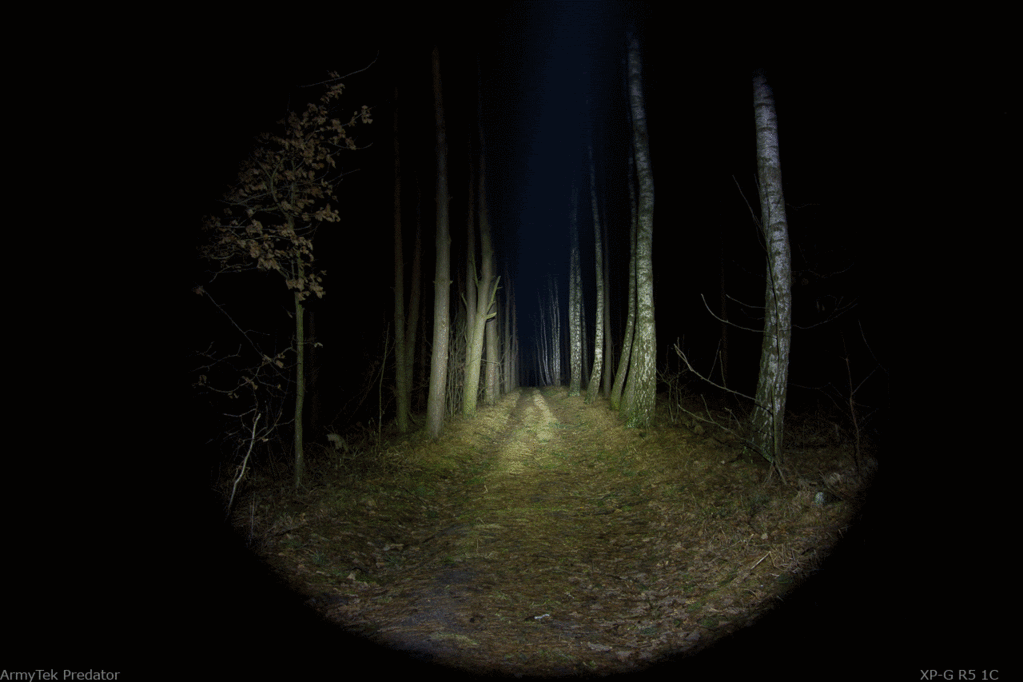
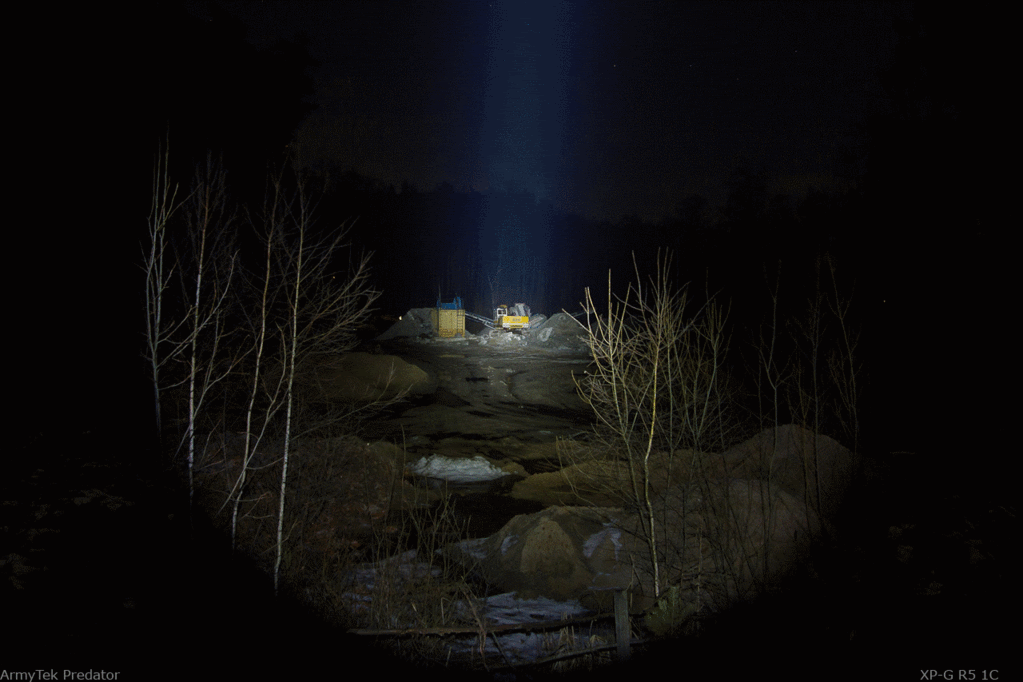
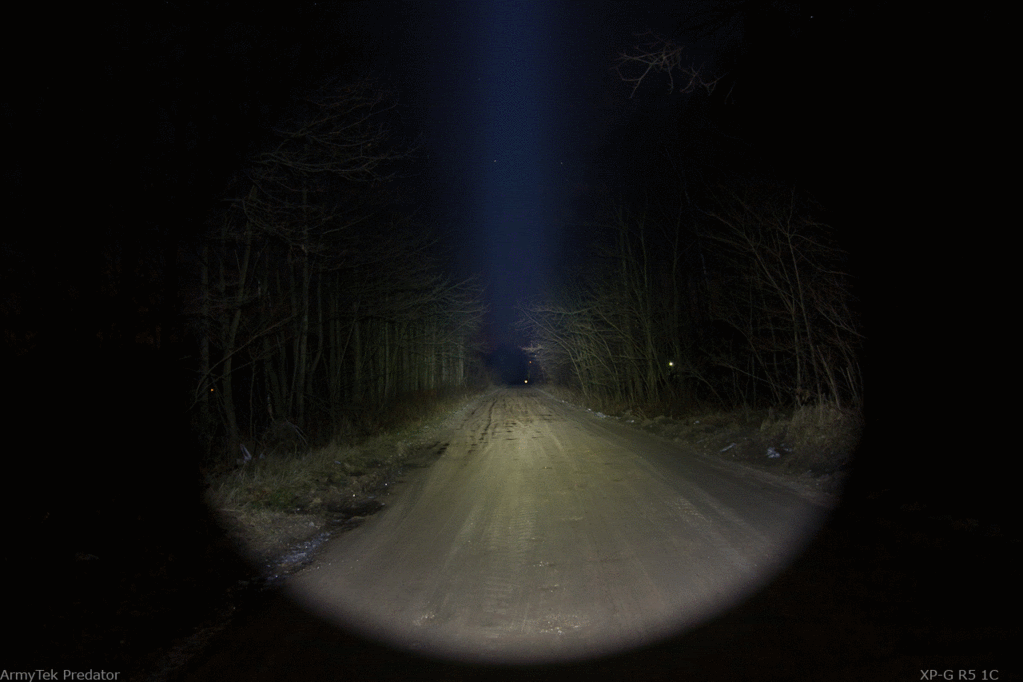
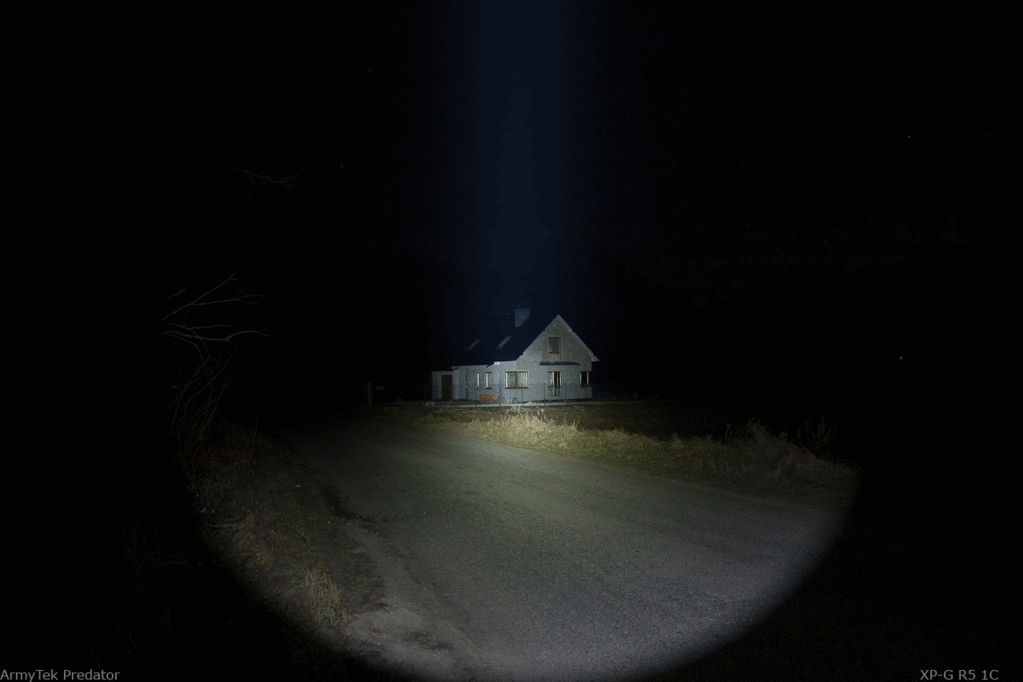
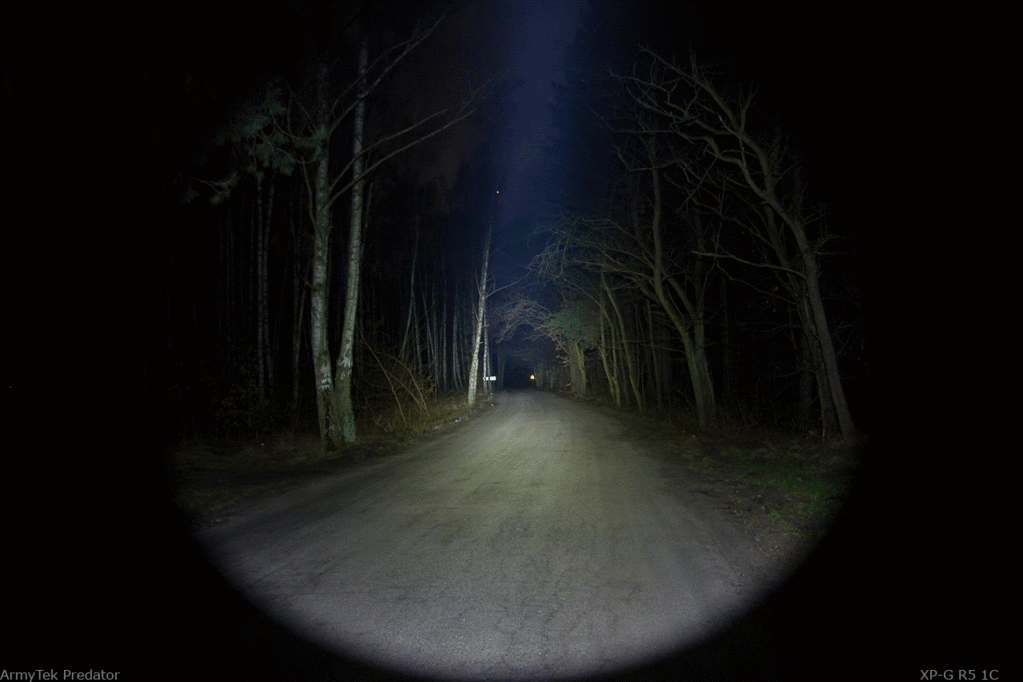

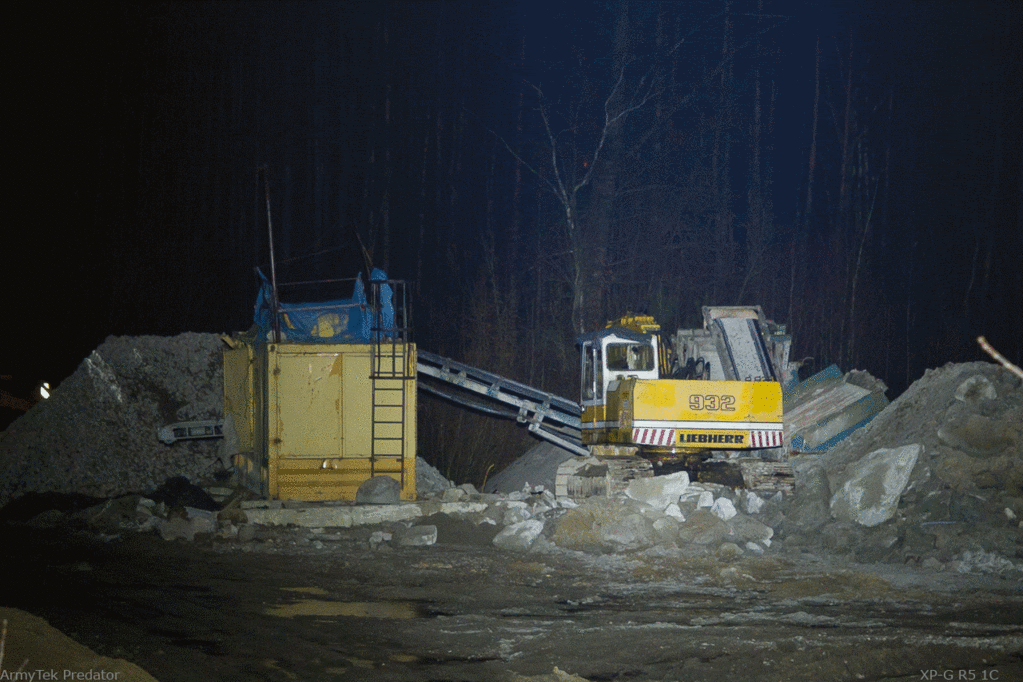
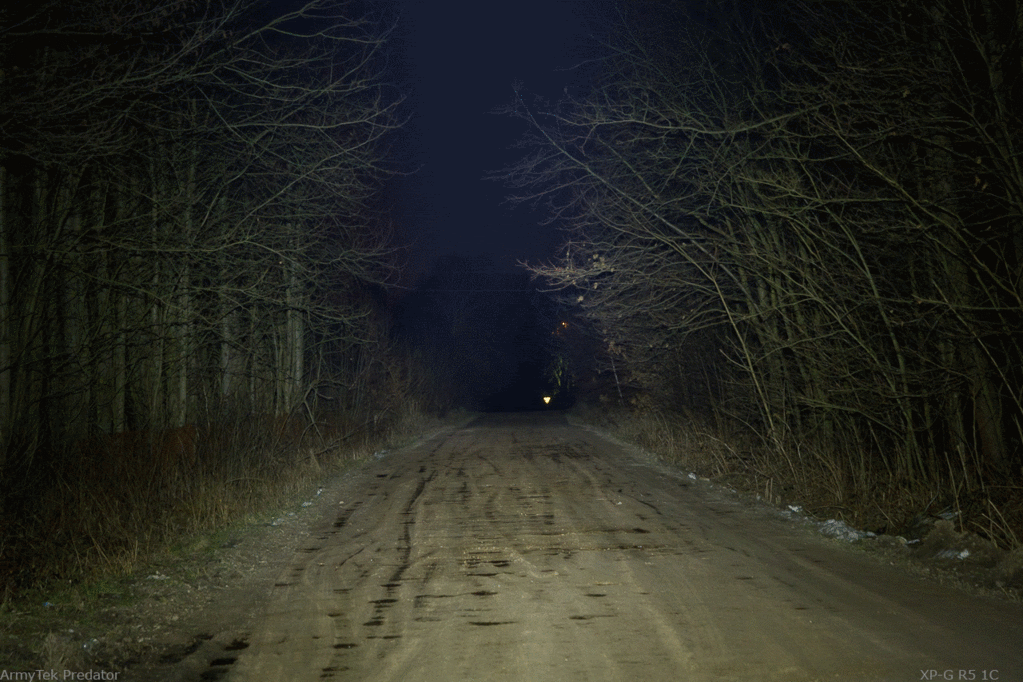
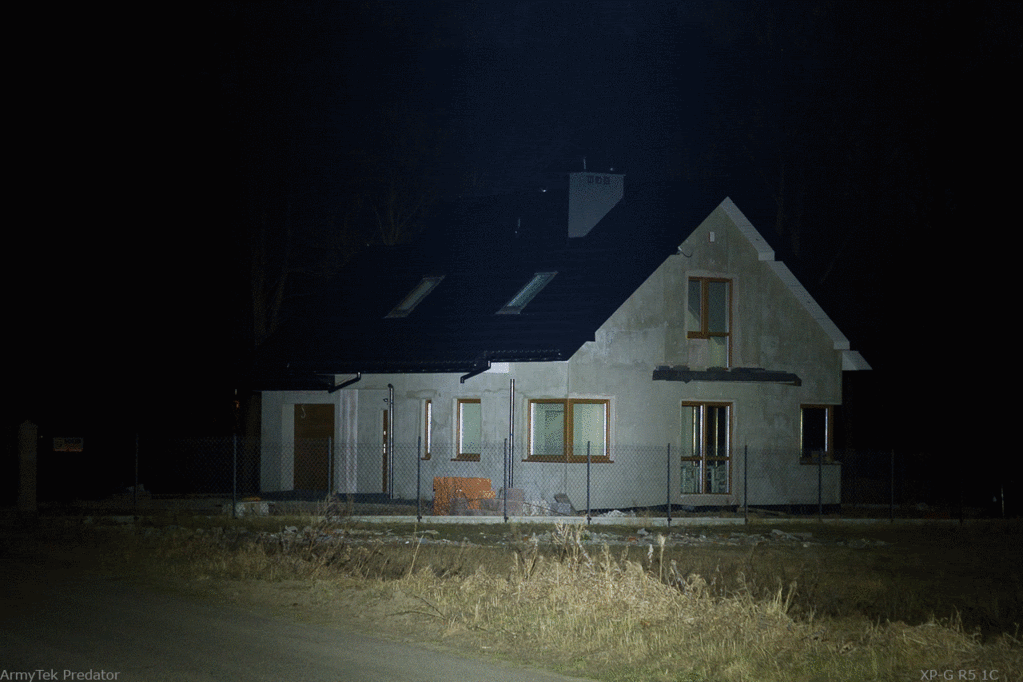
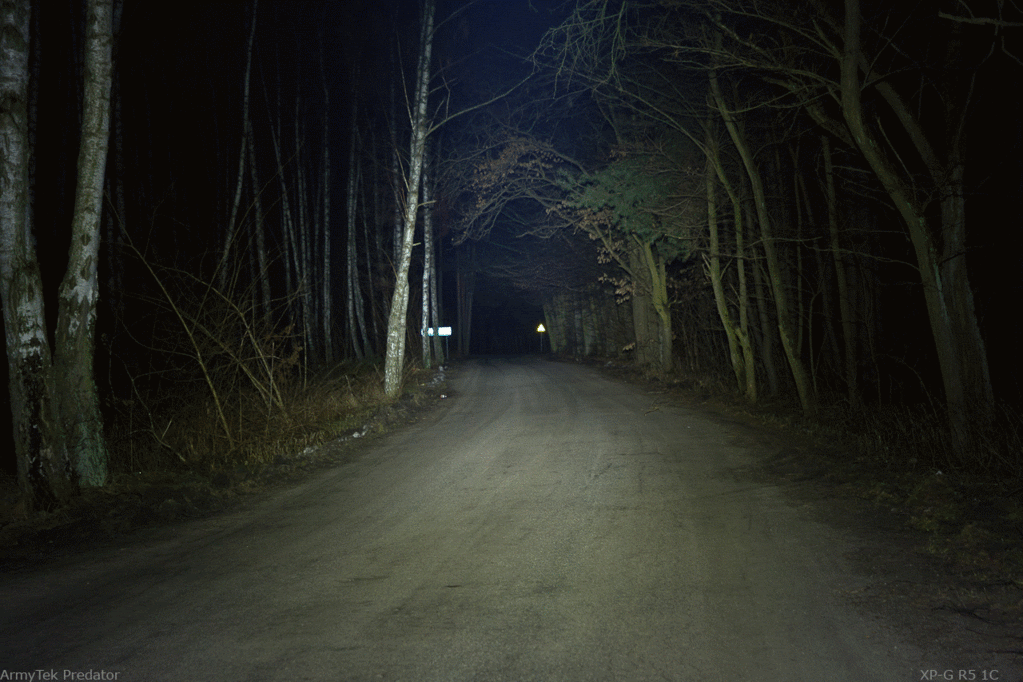
Set of 40 individual beamshots
wide angle
R5 1C, S2 2T, R4 5C, 90CRI




















close-up: R5 1C, S2 2T, R4 5C, 90CRI




















Cold front always leaves very clean but unstable air mass. Opposite to the first session, that night was very dry and clear, with high visibility, low temperature falling gradually below 0 degr. C and with quite strong wind. I have a problem with holding flashligths stable, even the camera on the tripod suffered from wind gusts. Snow has totally gone, leaving dirty ground and many shades of gray and brown. Total darkness in the sites during second session didn't require reference shots. I used different exposure times to best fit luminance of my targets at different dstances however it's the same for particular target. We can see near pure Rayleigh scattering which causes strong blue haze to the 1C beam. On the other side 90CRI which is long wavelength dominant is low scattered without blue haze at all. Clear night require as many lumens as possible to illuminate distant targets. S2 2T bin is pure winner here. Next to it is R4 5C which is favorised by reflected spectrum of brownish targets and lower Rayleigh scattering. R5 1C is bad mainly due to the cool tint, which is more scattered and less reflected from brownish surfaces. The weakest is warm 90CRI which is only Q2 bin.
Next session on the way...
Winter - 1C, Spring - 2T, Summer - 5C, Fall - 90CRI.



From left to right: R5 1C, S2 2T, R4 5C, Q2 90CRI

As you can see on the Cree chart they covers wide range of available CCT's of currently produced white LED's.
S2 2T bin is rare bin in ArmyTek offer, I hope they will provide it for us permanently. It is rare occassion to compare such a broad tints range from the same flashlight in one place at one moment. I'm going to make new sessions continuously across many places and atmospherics conditions in this year as time allows. My camera, Canon EOS 40D can capture high quality images and the only limitation is availability of interesting sites for beamshot sessions. But we will see...
Session 1: "Foggy winter near the city"

How does 331lm 90CRI stand for the 500lm S2?
2sec, f/4, ISO400 exposure, last set of pictures (graffiti dummy tank) on ISO200.
35mm (35mm film equivalent) focal length
5000K daylight white balance
All beamshots on high mode (LED current 1500mA)
Stacked photos
wide angle, close-up


animated GIF's








Set of 45 individual beamshots
wide angle
reference shot, R5 1C, S2 2T, R4 5C, 90CRI

























close-up: R5 1C, S2 2T, R4 5C, 90CRI




















It was misty evening during slight thaw. Ambient light from near city was present due to low clouds cover. Natural, wet targets always favorise warm tints. Warm light also scatters less in foggy air so weaker output of Q2 90CRI LED suprisingly goes near as far as massive output of 2T S2 which also is good for natural green targets illumination. During that session I found 1C and 5C tints most pleasant to my eyes. 2T was greenish in the comparison to the rest of the lights but also the brightest, which is obvious.
Session 2: "The throw behind the cold front"

When the lumens play the main role.
different exposure settings for each scene depending on target's distance, the same exposure settings for each tint in one scene.
28mm (35mm film equivalent) focal length
5000K daylight white balance
Stacked photos
wide angle, close-up


animated GIF's










Set of 40 individual beamshots
wide angle
R5 1C, S2 2T, R4 5C, 90CRI




















close-up: R5 1C, S2 2T, R4 5C, 90CRI




















Cold front always leaves very clean but unstable air mass. Opposite to the first session, that night was very dry and clear, with high visibility, low temperature falling gradually below 0 degr. C and with quite strong wind. I have a problem with holding flashligths stable, even the camera on the tripod suffered from wind gusts. Snow has totally gone, leaving dirty ground and many shades of gray and brown. Total darkness in the sites during second session didn't require reference shots. I used different exposure times to best fit luminance of my targets at different dstances however it's the same for particular target. We can see near pure Rayleigh scattering which causes strong blue haze to the 1C beam. On the other side 90CRI which is long wavelength dominant is low scattered without blue haze at all. Clear night require as many lumens as possible to illuminate distant targets. S2 2T bin is pure winner here. Next to it is R4 5C which is favorised by reflected spectrum of brownish targets and lower Rayleigh scattering. R5 1C is bad mainly due to the cool tint, which is more scattered and less reflected from brownish surfaces. The weakest is warm 90CRI which is only Q2 bin.
Next session on the way...
Last edited:
